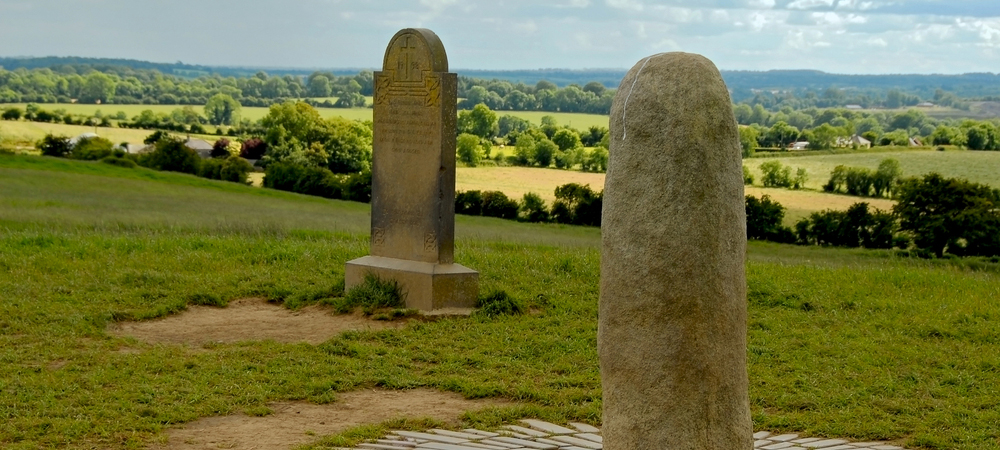
Hill of Tara
To some, the Hill of Tara is merely a low ridge of land running between Navan and Dunshaughlin. To others, it is an ancient and mystical site and an essential part of Ireland’s history.
Along the Hill of Tara is its oldest visible monument, a passage tomb called Dumha na nGiall, that dates from about 3000 BC. Tara itself is named from Teamhair na Ri, Sanctuary of the Kings, and was the traditional inauguration site of the High Kings of Ireland from about 600 BC to 400 AD, as well as the royal centre of Milde, or the middle kingdom.
The standing stone monument Lia Fáil, or Stone of Destiny, within the area known as the Forrad, the Royal Seat, is where Irish Kings came to be crowned. Stories say that the Stone would cry out when a true King set a foot on it.
In 433, St Patrick is said to have lit the Paschal fire on the Hill of Slane nearby, to defy the Pagan King of Tara. The High Kings finally abandoned Tara in 1022.
The Hill remained a revered and important place throughout the ages, though. Daniel O’Connell spoke out from the Hill of Tara, against the Union of Great Britain and Ireland, to over a million people in 1843. A letter to the editor of The Times in 1902 from key figures in the Gaelic Revival mentioned the Hill of Tara, and described it as the most consecrated spot in Ireland.
Although only a few of the historic monuments still survive on the top of the Hill, there is no mistaking the cultural significance of the place. It is also supposed to possible to see an entire quarter of Ireland’s landscape from the summit.
Geo-Coordinates: Latitude: 53.579722 Longitude: -6.611944














